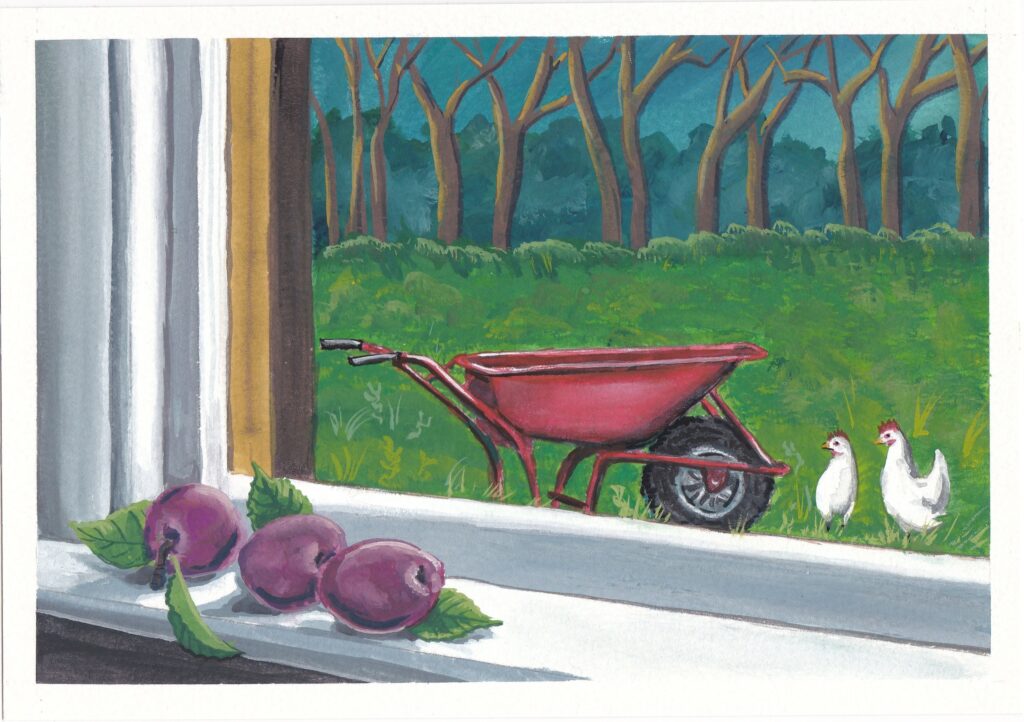
I’ve never had any children and I suppose at this rate I never will. I was married to a woman who didn’t want any children and, while I sometimes wonder if things would have been different had we reproduced, I am glad we don’t have any to worry about now. My cat Iggy is the love of my life at the moment. Besides, I get the feeling that having small children to care for would be something like a perpetual panic attack. I mean, parents must realize this, right? Nearly everything can kill them. How do they cope with this? Do parents of young children greet each other nervously? “How are things with your little ones?” “Well, nothing killed them this week.” “Oh, thank god!”
This week I read “Fever Dream” by Samanta Schweblin, and before we go further, I would like to quibble pedantically with the subtitle: “A Novel”. I’m a bit tired of publishers who need to tell us this on the cover of every book. I recently saw in a bookstore “Ask the Dust: A Novel”. I don’t recall John Fante’s best novel being called “A Novel” when I read it years ago. Nor do I imagine anyone looking at the book and mistakenly assuming it’s a non-fiction book about how to broach difficult topics with soil. It also feels like a cheat with Fever Dream, which I read in about an hour and a half, about how long it takes to get through a novella. Which it is, let’s be honest.
Okay, but perhaps I got through it that quickly because it’s also a compelling read. The title is actually fairly apt too because the story reads like a fever dream. Somehow Schweblin has captured in prose the feeling of being trapped in a nightmare in which everything is vague and menacing and absurdly horrifying. Think of how difficult this is to pull off in a horror novel and you’ll understand why few of them are actually frightening. H.P. Lovecraft can write vividly about hideous, nameless elder things and still not scare you. Stephen King was a favorite of mine for reading in the tent when I was a Boy Scout, but as an elder myself, I find his stories have a few too many passages that read like:
“She realized the shape in the room was not a coat, and it wasn’t a chair. No sirreebob. This was the Dark Man. He was here for her.
And he was very mad.”
The point is it’s very hard to write horror fiction that is genuinely unsettling. In fact, for all of the horror movies that come out every year, it’s rare that one of them is truly frightening either. The horror stories that work, at least for me, are the ones in which the plot does seem to move forward according to an inexorable nightmare logic. In short: Things don’t make sense and they’re getting worse.
In Fever Dream, Schweblin begins with a woman in a hospital talking to a boy and telling him how she got there. From the beginning, the boy is insistent that she tell him every detail of her recent conversation with his mother, in order to “find the exact moment when the worms came into being.” The worms in her body that is.
And, the story keeps getting weirder. The boy’s mother tells the woman that her son has been poisoned by something in the local environment and saved by a folk healer psychic, only to come back with his soul diminished and changed, split between two bodies. She tells him, “You’re just there, as though switched off.” At first, he barely talks. Animals keep dying around him. Something similar has happened to many of the children in the town and will soon happen to the woman’s daughter and, we assume, to her as well. The white spots on the skin and the feeling like there are worms underneath. One suspects the author is drawing from Argentina’s horrid environmental legacy, especially after a scene in which strange men are seen unloading mysterious barrels from a truck. But it’s never really clear just what the hell is going on, and Schweblin never has the passage where some doctor steps in to explain. Thankfully.
It’s one of those stories that is all in the telling; to describe it further makes it sound cliche, like a bad horror movie trailer. “Something is happening to the children in this little town…” Many novels read like film treatments now. But this one reads more like a sketched remembrance of a terrible dream. The prose is sparse, consisting of the conversation between the boy, David, and the woman, Amanda, in which his lines are in italics. She recalls the bizarre conversation with his mother, but can remember very little. Everything is foggy and the time frames are unclear. And I think it’s the vagueness of everything that makes it work.
And Schweblin makes much of the sheer terror of parenting, returning often to Amanda’s idea of a “rescue distance” beyond which she cannot be separated from her daughter. As long as she stays within that distance, her child will be safe. Of course, it doesn’t work when everything around them is toxic. Or infectious. Or cursed. Like I said, Schweblin leaves much unexplained. The story works better that way. I’m just glad I don’t have any children.
So, what are YOU reading, watching, playing, pondering, or creating this weekend?





